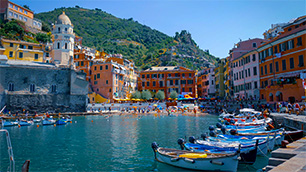Global Travel News
PATA CEO Commends Inaugural NICE 2025 for Advancing Sub-Regional Cooperation

“Nepal’s strategic position between two of the world’s largest outbound markets—China and India—creates unique opportunities for sub-regional tourism cooperation,” said Mr Hamid. “By fostering closer ties and joint initiatives, destinations in this region can unlock new visitor flows, develop shared tourism products, and build a more resilient and sustainable industry.”
“On behalf of the Nepal Tourism Board, we extend our sincere appreciation to PATA for endorsing NICE 2025 and sharing a thought-provoking presentation,” said Mr Joshi, acknowledging PATA’s contribution to the event. “Their support and strategic insights are instrumental in strengthening Nepal’s position as a vital hub for regional tourism cooperation. This collaboration plays a crucial role in advancing sustainable growth and fostering cross-border partnerships that will shape the future of our tourism industry.”
The meetings, organised by the PATA Nepal Chapter, took place alongside NICE 2025, the first-ever tri-nation tourism expo aimed at fostering tourism and trade partnerships across the sub-region. The event attracted over 600 delegates from 14 destinations, including more than 100 international participants, and was jointly hosted by the PATA Nepal Chapter, Nepal Tourism Board, Pokhara Tourism Council, and key public and private stakeholders.
Mr Lakai stated, “Nepal is poised for sustainable tourism growth, strategically located between India and China—two of the world’s largest populations and emerging economies. By strengthening regional collaboration, Nepal can serve as a neutral hub for diverse tourism segments, including solo travel, adventure, pilgrimage, weddings, wellness, and business events. The Nepal-India-China Expo 2025 was successfully organised to address these endeavours.”
The CEO of PATA delivered a keynote address at NICE 2025, emphasising the potential of Nepal’s Meetings, Incentives, Conferences, and Exhibitions (MICE) sector in driving overall tourism growth. Given Nepal’s strategic location between the world’s two largest outbound travel markets, China and India, he underscored the importance of defining a clear MICE strategy.
“Nepal needs to determine which MICE segment it will focus on, and PATA will be delighted to help develop a strategic framework for the country’s MICE industry,” Noor stated.
Citing Nepal’s rich history, vibrant culture, and stunning Himalayan backdrop, he highlighted opportunities in incentive travel, niche markets such as destination weddings (particularly for the Indian market), and adventure sporting events. He also stressed the need for infrastructure development to position Nepal as a premier MICE destination.
NICE 2025 also featured expert discussions on regional tourism trends, including China’s outbound market, aviation growth, wellness tourism, and the potential of Indian weddings in Nepal. The event’s B2B Expo facilitated over 2,100 pre-matched business appointments, bringing together 80 buyers from India and China with 75 sellers. The success of NICE 2025 underscored Nepal’s growing prominence as a sub-regional tourism hub and its commitment to strengthening cross-border collaboration for long-term sustainable growth.
PATA remains dedicated to fostering regional dialogue and partnerships that drive sustainable tourism development, recognising that collaborative efforts among neighbouring destinations are key to long-term success.
About PATA
Founded in 1951, the Pacific Asia Travel Association (PATA) is a not-for-profit membership association that acts as a catalyst for the responsible development of travel and tourism to, from and within the Asia Pacific region. The Association provides aligned advocacy, insightful research, and innovative events to its member organisations, which include government, state and city tourism bodies; international airlines and airports; hospitality organisations, and educational institutions, as well as youth members across the world. The PATA network also embraces the grassroots activism of the PATA Chapters and Student Chapters, who organise numerous travel industry training programmes and business development events across the world. Thousands of travel professionals belong to the 31 local PATA Chapters worldwide, while hundreds of students are members of the 15 PATA Student Chapters globally. The PATAmPOWER platform delivers unrivalled data, forecasts, and insights from the PATA Strategic Intelligence Centre to members’ desktops and mobile devices anywhere in the world. PATA’s Head Office has been in Bangkok since 1998. The Association also has an official office in Beijing. Visit www.PATA.org.












 Must Try Foods
Must Try Foods
 Gastronomy Cities
Gastronomy Cities
 Chef's Talk
Chef's Talk